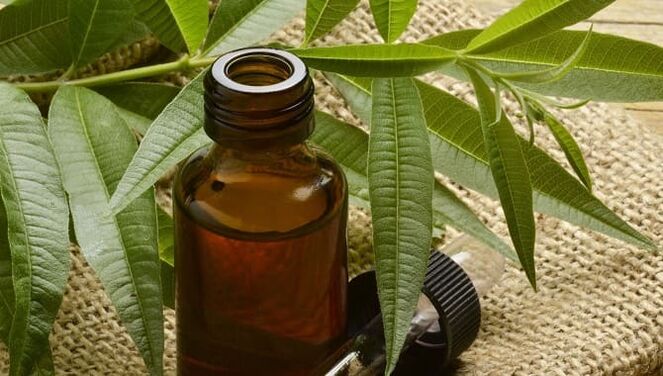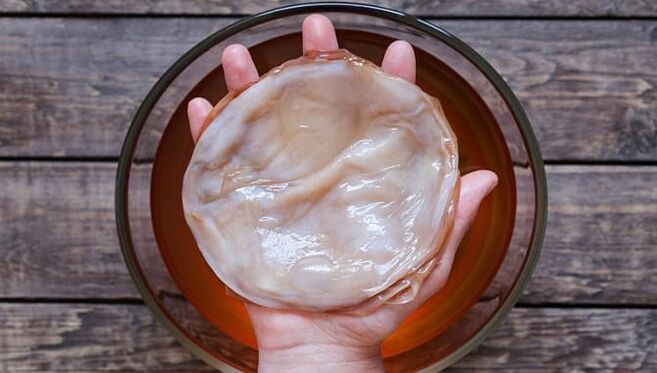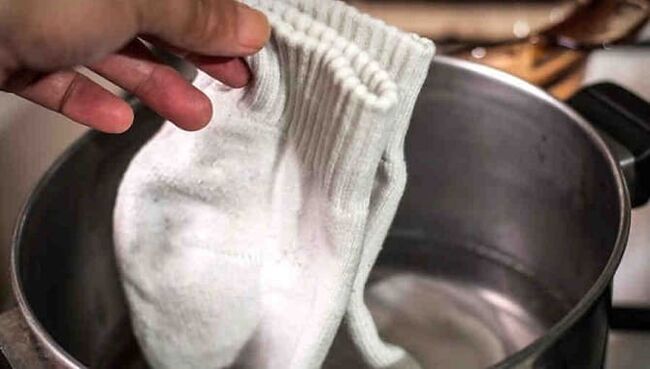Foot fungus is a disease, the signs of which are noted in about 20% of people. Mycosis is easy to catch by stepping with bare feet on a damp pool floor or sports locker room, but it is not so easy to cure. You need to start therapy quickly, with the appearance of the first symptoms. To do this, use any folk remedy for foot fungus in combination with medications prescribed by your doctor.
How to get rid of fungus on the feet with folk remedies
There are many ways to remove the fungus on the feet with folk remedies. The most famous of them are birch tar, garlic and onions, soda and salt, celandine, vinegar. All of them are able to alleviate the condition with onychomycosis, and with regular use, they help to heal.
Birch tar
A well-known folk remedy for fungus on the feet. Tar contains up to 15% tannins, phenols, alkaloids, essential oils, a small amount of carcinogens. It is not known when tar was first used for medicinal purposes, but traditional medicine has long known how to treat fungus using this viscous and pungent-smelling birch distillation product.
When applied on the feet, tar acts on several problems at once. He will soften the keratinized areas, and relieve inflammation, and create unfavorable conditions for infection.
The simplest folk remedy based on it is tar soap. It is suitable for various procedures:
- Soap paste lotions. Rub the soap into powder, dilute with water to a semi-liquid consistency, apply to the affected legs, fix with a plaster and leave for 3 hours.
- Baths. Rub the soap, measure out 3 tbsp. l. Fill a basin with hot water and dilute the soap powder. Steam your legs for a quarter of an hour.
- Rubbing. Grind a little tar soap into a powder, measure out 1 tsp. Add 2 tbsp. l. water and 1 tsp. soda. Apply the mixture to the toenail affected by the fungus before going to bed, rinse off the remainder in the morning. Repeat daily.
If there is no soap, but there is pure tar, you can make an ointment from it. According to the folk recipe, you can take badger fat or any neutral cream as a base. Equal parts of base and tar are mixed and used to lubricate the affected areas on the legs. After two hours, rinse the skin to remove excess ointment.
You can enhance the folk recipe with sulfur powder. Take 2 parts tar, 1 part sulfur, 1 part cream or badger fat. The composition must be heated and stirred thoroughly. Apply the finished ointment to your toenails and cover with a plaster.
Antifungal vegetables - garlic and onions
Onions and garlic are the most effective foods for fungal infections. They cleanse the skin, strengthen the body's immune defenses and work great in tandem. In folk medicine, they are used for a wide range of diseases.
Garlic is rich in phytoncides, allicin (a substance with a strong fungicidal effect), essential oils. Onions are rich in phytoncides and essential oils, flavonoids.
For fungus on the feet, apply the vegetables topically, individually or in a mixture:
- Garlic juice. Crush the cloves, squeeze the juice and apply to your feet twice a day with any applicator, but not with your fingers.
- Onion and garlic juice. Chop 4 cloves of garlic, pour over 1 tbsp. l. onion juice. Apply and keep the composition on your feet with a compress or bandage for half an hour.
- Onion compresses. Chop the onion, mix with petroleum jelly in equal proportions. Apply to the skin on the legs daily in a course of 10-15 days.
- Garlic appliques. There is no time to squeeze the juice of garlic - just cut a clove in half, sprinkle with salt and rub the affected skin in halves.
- Garlic lotion. Prepare the garlic gruel and squeeze out the juice. Mix 1 part juice with 1 part water and 1 part rubbing alcohol. Apply the resulting lotion to the affected area on your legs.
Essential oils
In the recipes recommended by traditional medicine for foot fungus, various essential oils are often mentioned - clove, cinnamon, thyme, cassia oil, geranium, oregano, and lemongrass.

But the most in demand is tea tree essential oil. It is a powerful high concentration antiseptic. Use it carefully so as not to cause burns, redness, or irritation of the skin.
There are several versions of the use of folk remedies - you can rub in pure oil, or you can dissolve it in baths.
To prepare a healing bath, use the following proportions: 1 liter of water, 1 tsp. soda, 1 tbsp. l. salt, 15 drops of oil, 1 tbsp. l. honey. If you need more mixture, increase the amount of all components in multiples. The baths are carried out for 20 minutes, every day without gaps in a course of 1-3 months.
Herbs for baths
Herbal baths are soft folk remedies against foot fungus. Just before using, make sure that you do not have an allergic reaction to the plants that make up the composition.
A simple folk recipe includes burdock, yarrow, plantain, and wormwood leaves. Mix the herbs in equal proportions, for example, 2 tbsp. l. Pour boiling water over the raw material, wait until it cools down a little, fill the basin with broth and immerse your feet. After a few days of daily steaming, the condition will improve.
A decoction of oak bark gives a good effect. Prepare it at the rate of 4 tbsp. l. dry raw materials per 1 liter of water. Add 2 drops of peppermint essential oil and 10 drops of tea tree oil, stir and let cool. After an hour, combine the broth, 3 liters of hot water and 2 tbsp. l. soda. You can keep your feet in such a mixture for 30 minutes. Set aside time for this in your daily schedule. The course usually lasts 2 weeks.
Soda and salt
Folk recipes based on salt and soda are extremely easy to prepare. Take a basin for baths, pour hot water, add a couple of tablespoons of baking soda and the same amount of salt (regular, sea or iodized), stir. If you have non-iodized salt, add a few drops of iodine. Steam your feet daily until symptoms disappear.
Soda is good for compresses on your feet. Prepare a liter of water, a teaspoon of baking soda, soak socks in it, squeeze out a little. They need to be worn on your feet for a long time, so put shoe covers / plastic bags on top, or just wrap your feet with cling film. Leave this compress on your feet for 2 hours. Repeat daily for 1. 5 months.
Rowan
An underestimated folk remedy for the treatment of mycoses. According to the recipe, fresh rowan leaves must be kneaded so that the juice appears, and applied to the feet. It is advisable to wrap it on top with a leaf of burdock, but you can do without it. Next, you need to wrap the leg with a bandage and leave the compress for a day. Then change to fresh. To be treated for 7-10 days.
Tea mushroom
Another popular recipe for foot fungus includes kombucha. Medusomycete contains usnic acid and yeast, which have a weak antifungal effect.

The mushroom can be enhanced by using an infusion that accumulates over three months.
Such a concentrated remedy will help against toenail fungus. Prepare the infusion: boil for 40 minutes and strain. Moisten cotton wool with broth, apply and fix overnight. In the morning, remove the diseased part of the nail and treat with iodine.
Another popular recipe for treating the fungus recommends cutting off a part of the mushroom, chopping it in puree and rubbing it into the feet and nails twice a day.
Celandine
The poisonous plant has a complex disinfectant, anti-inflammatory and soothing effect on the skin. Celandine oil is widely used in the treatment of skin diseases, and it is a well-known folk remedy for nail fungus.
Treatment with celandine does not require complex manipulations. It is enough to steam your feet in a soda bath and lubricate the affected areas with plant oil.
The oil is suitable for medical compresses. To do this, apply it to a cotton swab, attach it to the affected area and fix it for half an hour. Do this twice a day for 3-4 weeks.
Kalanchoe
Among the methods of treating foot fungus with folk remedies, indoor aloe is often mentioned. Grind 2-3 leaves of the plant, pour boiling water and leave for 3 hours. Moisten cotton wool or gauze in the resulting solution and treat the affected area once a day. Aloe softens the skin and accelerates healing. Best of all helps with toenail fungus.
Vinegar
Vinegar, popular in folk recipes, creates an environment that is destructive for the fungus, but it can also corrode the skin on the legs. Apply it carefully, in small concentrations and only if there are no ulcers or erosions:
- Soak in a solution of wine or apple cider vinegar (1 part vinegar to 6 parts water) for 15 minutes every other day until healthy nails grow back.
- Soak socks in vinegar and put on your feet overnight, repeat daily until symptoms disappear.
- Lubricate the affected areas with a mixture of equal amounts of vinegar essence and carrot juice (1 tablespoon each), daily until health is restored.
Use vinegar on shoes that come in contact with the affected skin on your feet. Take 70% acetic acid, moisten a swab, wipe the inner surface, leave in your shoes for 48 hours, placing the shoes in a tightly closed bag. Then ventilate.

Don't forget about socks and tights - it is better to boil them, not just wash them.
Simple medicines from the home first aid kit
In addition to expensive fungicidal preparations, there are many simple pharmaceutical remedies that can be used if the fungus on the legs is not yet so badly started. Knowing how to deal with the fungus with such medicines, you can use the available folk remedies.
Boric acid
Antiseptic that causes coagulation and denaturation of proteins of pathogenic microorganisms. In folk recipes, the remedy is used only locally and best of all helps with nail plate fungus.
Steam your feet in a soap and baking soda bath, peel off rough tissue with a pumice stone, file and trim your nails. Then apply boric alcohol to the affected area. Repeat the procedure daily. Use a disinfectant for socks, tights, and shoes.
Hydrogen peroxide
Peroxide can be used as compresses. According to folk recipes, it is necessary to apply a pharmaceutical preparation on gauze, apply to the affected skin for half an hour. Repeat every evening and morning for a week.
The peroxide will keep the fungus from spreading to other areas.
Iodine
Even without knowing how to cure the fungus on the feet, you will most likely remember this antiseptic, familiar to everyone from childhood. This drug is used as part of the folk treatment of mycoses. It can be used for making trays and lotions.
Prepare 5 liters of water and add 3 tbsp. l. iodine. Immerse your feet in such a concentrated bath for 20 minutes, then dry. Repeat every other day.
For lotions, dilute an equal amount of iodine and alcohol, dip a cotton pad in the mixture and dab the skin on your feet. Apply at bedtime daily for 5-10 days until symptoms decrease.

Iodine is not used for intolerance to this element and for any diseases of the thyroid gland.
Drops with essential oils
A drug that is prescribed for colds. But it is also effective against some fungi. Those who have tried the alternative method on themselves recommend applying the product daily to the affected area of the skin and nails after steaming. The substances in the composition of the drug have antiseptic properties, destroy fungi, viruses and bacteria, help in the complex treatment of mycoses on the legs.
This is not a complete list of folk remedies for the treatment of nail fungus. But whatever you choose, be sure to consult your doctor before using. In the case of a neglected fungus, weakened immunity and other aggravating factors, folk recipes may be ineffective. But with properly selected drug therapy, such drugs will be an excellent addition to complex treatment.
















